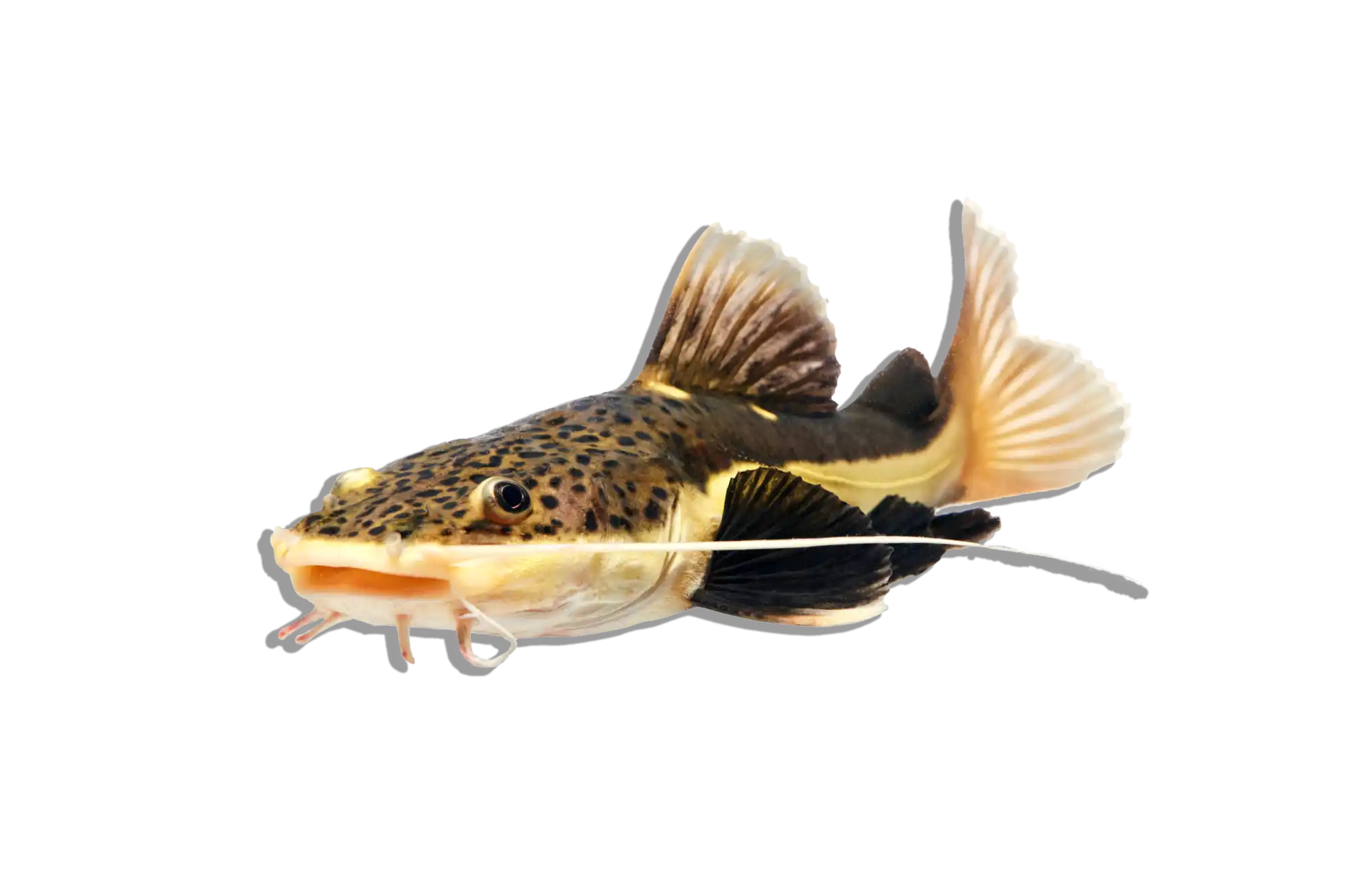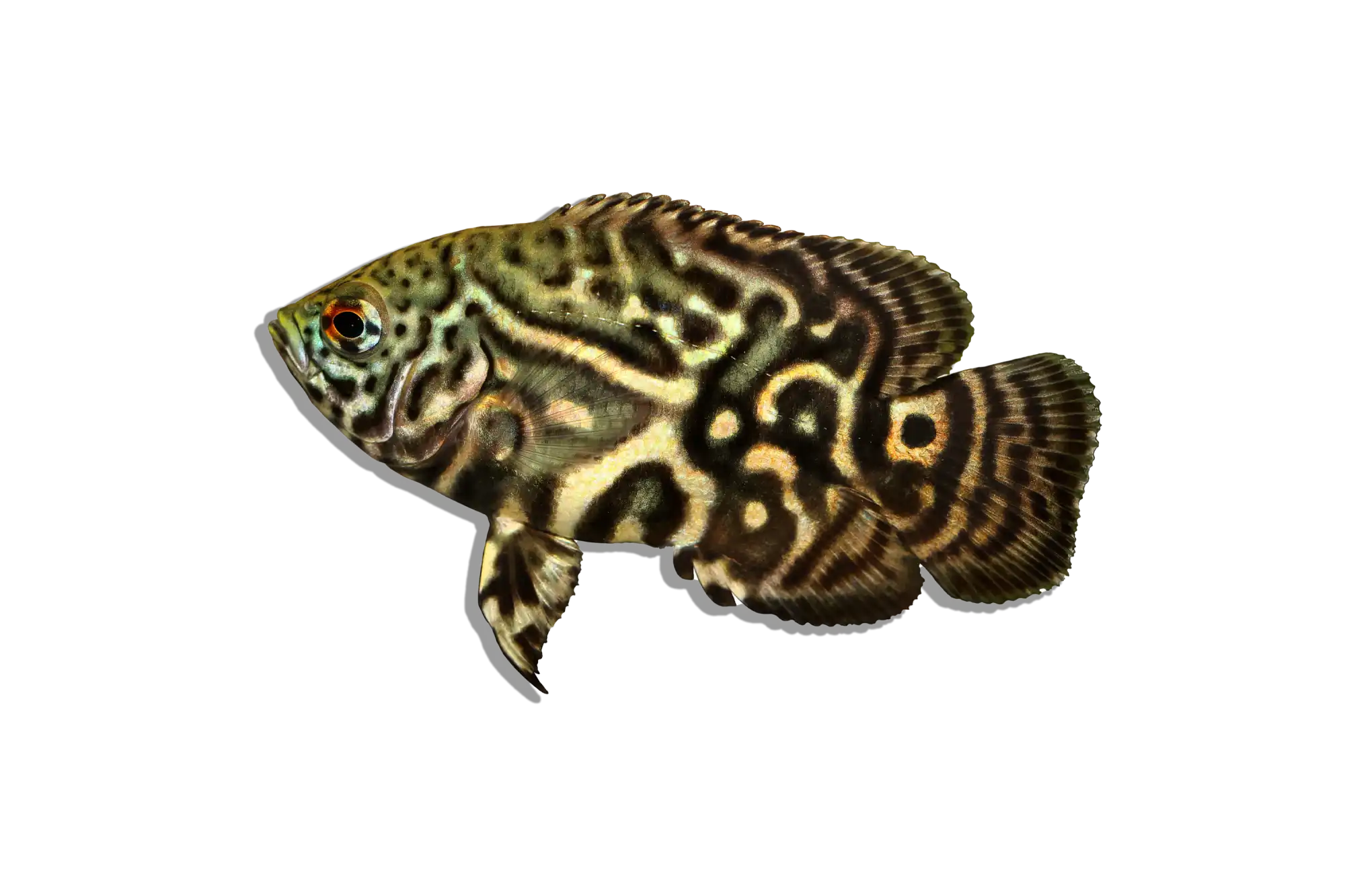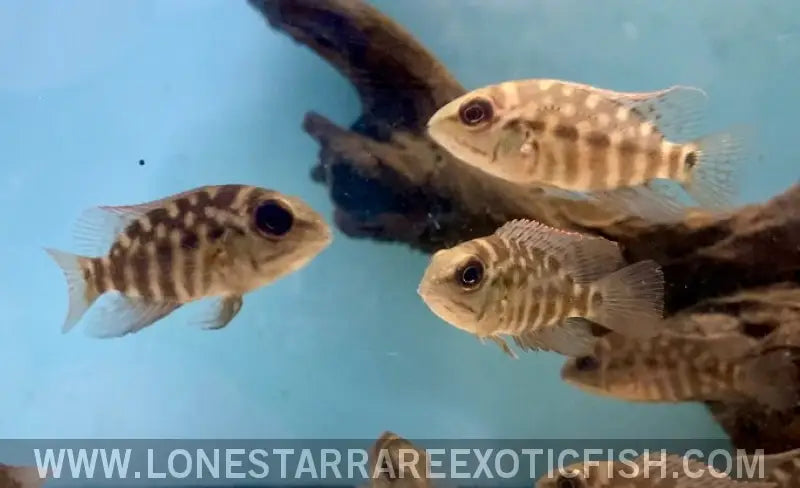Description
Common Name: True Parrot Cichlid
Scientific Name: Hoplarchus psittacus
Other Names: Parrot Cichlid, Green Parrot Cichlid
The True Parrot Cichlid is a large and striking freshwater fish known for its vibrant green coloration, parrot-like beak, and robust body. Unlike the hybrid Parrot Cichlids, the True Parrot Cichlid is a naturally occurring species. This cichlid displays a mix of greens, blues, and yellows, with males often exhibiting brighter colors and more intense markings during the breeding season. Their bold appearance and engaging behavior make them a popular choice for experienced aquarists.
Habitat and Distribution: The True Parrot Cichlid is native to the slow-moving rivers and floodplains of the Orinoco and Amazon River basins in South America, primarily found in Venezuela and Colombia. These fish inhabit areas with dense vegetation, submerged roots, and fallen logs, providing ample cover and foraging opportunities. The water in their natural habitat is typically warm, soft to moderately hard, and slightly acidic to neutral.
Size and Lifespan: In the wild, True Parrot Cichlids can grow up to 12 inches (30 cm) in length. In captivity, they typically reach about 10-12 inches (25-30 cm). Their lifespan can range from 10 to 15 years, depending on the care and conditions provided in the aquarium. Maintaining optimal water quality, a balanced diet, and a spacious environment are crucial for their longevity.
Diet and Behavior: True Parrot Cichlids are omnivorous, feeding on a variety of foods in the wild, including small fish, insects, crustaceans, and plant material. In an aquarium, they should be provided with a varied diet of high-quality cichlid pellets, live or frozen foods such as bloodworms, brine shrimp, and chopped raw fish. They also benefit from occasional vegetable matter like spinach or peas. These cichlids are known for their territorial and sometimes aggressive behavior, especially during breeding. They are best kept in a large, well-structured tank to minimize stress and aggression.
Breeding and Reproduction: Breeding True Parrot Cichlids in captivity is possible but can be challenging due to their size and specific environmental needs. They are substrate spawners, with the female laying eggs on a flat surface such as a rock or piece of slate. The male fertilizes the eggs, and both parents guard the eggs and fry aggressively. Providing a separate breeding tank with optimal water conditions, plenty of hiding spots, and a high-quality diet can increase the success rate of raising fry.
Aquarium Care and Tank Requirements: To keep True Parrot Cichlids, a large aquarium of at least 100 gallons is recommended to provide ample swimming space and accommodate their size. The tank should include plenty of hiding spots created with rocks, driftwood, and robust plants to reduce stress and establish territories. A sandy or fine gravel substrate is ideal, along with moderate water flow to simulate river conditions. Efficient filtration and regular water changes are essential to maintain water quality, as these fish produce a significant amount of waste. A tight-fitting lid is also recommended to prevent escapes.
Ideal Tank Mates: True Parrot Cichlids can be kept with other large, robust fish that share similar water parameter requirements. Suitable tank mates include other large cichlids, large catfish, and similarly sized fish. It is important to avoid housing them with small or very timid fish, as they may be bullied or seen as prey. Ensure that tank mates are not overly aggressive to prevent stress and injuries.
Difficulty Level: Intermediate to Advanced. While they are hardy and adaptable, their large size, specific dietary needs, and territorial behavior require attentive care and a well-maintained aquarium.
Water Parameters:
- Temperature: 75-82°F (24-28°C)
- pH: 6.0-7.5
- General Hardness (GH): 3-15 dGH
- Carbonate Hardness (KH): 2-8 dKH
- Ammonia: 0 ppm (ideal), up to 0.25 ppm (max)
- Nitrite: 0 ppm (ideal), up to 0.25 ppm (max)
- Nitrate: <20 ppm (ideal), up to 40 ppm (max)
Additional Information:
- The True Parrot Cichlid's vibrant coloration and engaging behavior make it a standout addition to any large aquarium, adding both beauty and interest.
- These fish are known for their intelligence and can recognize their owners, often displaying interactive behaviors.
- In their natural habitats, True Parrot Cichlids play a role in controlling populations of smaller fish and invertebrates, maintaining the ecological balance.
- Fun fact: The name "Parrot Cichlid" is derived from the fish's beak-like mouth, which resembles that of a parrot and is used to crush and eat hard-shelled prey.


























